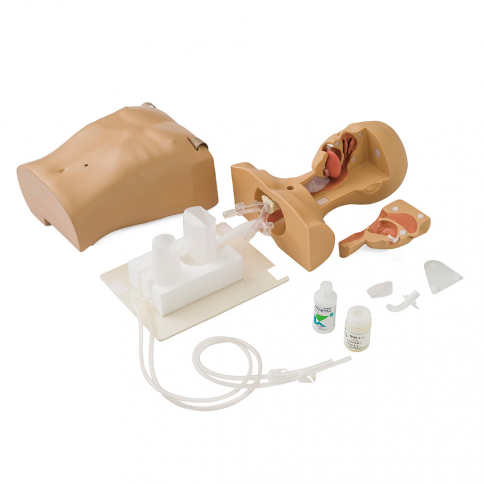

Providing a means for the patient to communicate discomfort and a desire to pause during the procedure helps alleviate anxiety.ġ1. This procedure can be anxiety-provoking and uncomfortable for many patients.

Agree on a signal the patient can use if they wish you to pause during the procedure. This helps prevent biomechanical injury to the health care provider.ġ0. Raise bed to a comfortable working height. This allows the NG tube to pass more easily through the nasopharynx and into the stomach.ĩ. Position patient sitting up at 45 to 90 degrees (unless contraindicated by the patient’s condition), with a pillow under the head and shoulders. This should be commensurate with the reason for the NG tube.Ĩ. Check doctor’s orders to determine whether the NG tube is to be attached to suction or a drainage bag. Check doctor’s orders for type of NG tube to be placed and reason for placement.Ĭheck appropriate orders relevant to patient safety.ħ. Patient must be able to follow instructions related to NG insertion to allow for passage of tube through nasal and gastrointestinal tracts.Ħ. Assess patient’s level of consciousness and understanding of procedure. Palpate patient’s abdomen for distension, pain, and/or rigidity.ĭocument assessment findings and determine appropriateness of NG tube insertion related to reason for insertion and patient’s physical assessment.ĥ. If either nostril is equally suitable, select the nostril closest to the suction.
#Qfeed for tube feeding nares skin#
Visually inspect condition of patient’s nasal and oral cavities.Ĭheck for signs of infection or skin breakdown.ģ. Assess for the best nostril before you begin.ĭo this by occluding one side and asking the patient to sniff. Ask the patient about previous injuries or history of a deviated septum. This prevents the transmission of microorganisms. Perform hand hygiene and gather supplies.

Complete necessary focused assessments.ġ.Apply principles of asepsis and safety.Explain process to patient offer analgesia, bathroom, etc.Confirm patient ID using two patient identifiers (e.g., name and date of birth).Checklist 78: Inserting a Nasogastric tube Disclaimer: Always review and follow your hospital policy regarding this specific skill. The head of bed should always be raised 30 degrees or higher.Ĭhecklist 78 outlines the steps for inserting a nasogastric tube. Patients with an NG tube are at risk for aspiration. Lying flat increases the patient’s risk of aspirating stomach contents. These patients should never be allowed to lie completely flat.The drainage flow is probably obstructed and the tube will need to be irrigated. If the patient complains of abdominal pain, discomfort, or nausea, or begins to vomit, report it immediately.Some patients may be allowed to suck on ice chips. This can include rinsing the mouth with cold water or mouthwash as long as the patient does not swallow. Mouth care will help to relieve the dryness. This causes dehydration of the nasal and oral mucosa, and patients will complain of thirst, but they are usually NPO ( nil per os or nothing by mouth). Because one nostril is blocked, patients tend to mouth breathe.Ensure that the tube is securely anchored to the patient’s nose to prevent excess tube movement, and is pinned to the gown to avoid excessive pulling or dragging. The tube constantly irritates the nasal mucosa, causing a great deal of discomfort. When working with people who have nasogastric tubes, remember the following care measures: The NG tube is fastened to the patient using a nose clip, and is taped and pinned to the patient’s gown to prevent accidental removal of the tube and to prevent the tube from slipping from the stomach area into the lungs. In these situations, the NG tube is used to prevent nausea, vomiting, or gastric distension, or to wash the stomach of toxins. These tubes are narrower and smaller bored than a Salem sump or Levine tube.Īn NG tube can also remove gastric content, either draining the stomach by gravity or by being connected to a suction pump. The tube is used to feed patients who may have swallowing difficulties or require additional nutritional supplements. Deliver nutrients to the patient via a feeding pumpĪn NG tube used for feeding should be labelled.Placement of NG tubes is always confirmed with an X-ray prior to use (Perry, Potter, & Ostendorf, 2014). 10.3 Nasogastric Tubes Using a Nasogastric TubeĪ nasogastric (NG) tube is a flexible plastic tube inserted through the nostrils, down the nasopharynx, and into the stomach or the upper portion of the small intestine.


 0 kommentar(er)
0 kommentar(er)
